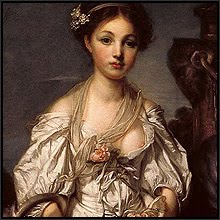I am passionate about book covers. During my career I have, on commission from various publishers, produced the artwork for many titles by a variety of authors, including Ursula Le Guin, H.G. Wells, Arthur C. Clarke, Edgar Allan Poe, Daphne du Maurier and Mary Shelley. It is, after all, the cover art which in no small part has an influence upon a potential reader, and therefore should faithfully reflect in visual form what an author expresses in the text.

First published in 1818, Mary Shelley’s Frankenstein has gone on to become more than a familiar name. Two centuries later we now use the term ‘Frankenstein’s monster’ to describe something – some scheme or invention – which in the beginning had seemed like a brilliant and promising innovation, but which in practice has slipped its leash to threaten our jobs and even our social wellbeing. We must see whether AI – artificial intelligence – will prove to be one such, but there now can be little doubt that the former wonders of the industrial age, with their polluting fumes, non-biodegradable plastics and other environmentally damaging materials, come under this description.

The young chemist Victor Frankenstein’s decision to pursue his experiments with matter to convert that which is non-living into a living organism eventually produces a creature of great stature. Victor had imagined that his being would be a thing of striking beauty, but the opposite turns out to be the case. The parchment-yellow skin of the creature is shrunken and stretched taught over his bones, making him appear more as an animated corpse than as a naturally living being. Victor flees his own created horror in revulsion, but when he eventually returns the creature is missing.

In spite of these horrors, Frankenstein is not a ‘scary monster’ story as such. It is a true archetypal gothic. Which is to say that it is a tale of unrelenting and remorseless fate set in an almost unbearable emotional landscape of loneliness and isolation, and it is this which provides the true horror. The novel’s various settings, from the jagged peaks of the Alps to the bleak frozen wastes of the Arctic, provide the physical backdrop, serving to enhance the desolation of what is experienced emotionally by Frankenstein in his desperate pursuit of his flawed creation.

The monster desires nothing more than simple acceptance and a companion of his own kind, and it is the denial of these which drives his own frenzied behavior of cruel despair. I have here used my own digitally enhanced painting of my cover art (the top image) because this is what I most wanted to convey: the monster’s face as a sort of geography of pain and loneliness. We might conclude that there already are human monsters in the world who, through war or blind fanaticism or a craving for power, cause sufferings enough, without our striving to create artificial monsters of our own.
Hawkwood
Artist: David Bergen (‘Hawkwood’)
Work: Frankenstein, 1993
Medium: Oil paint on canvas, enhanced with digital textures
Location: Artwork owned by the artist, published by The Penguin Group, 1994
Artist: Philip James De Loutherbourg
Work: An Avalanche in the Alps, 1803
Medium: Oil paint on canvas
Location: The Tate Gallery, London
Artist: Caspar David Friedrich
Work: Mountain Landscape in the Mists, 1774-1840
Medium: Oil paint on canvas
Location: Staatliche Museen Heidecksburg, Rudolstadt, Germany
Artist: Caspar David Friedrich
Work: The Sea of Ice, 1823-1824
Medium: Oil paint on canvas
Location: Kunsthalle Hamburg, Hamburg, Germany







































No comments:
Post a Comment
You are welcome to share your thoughts..